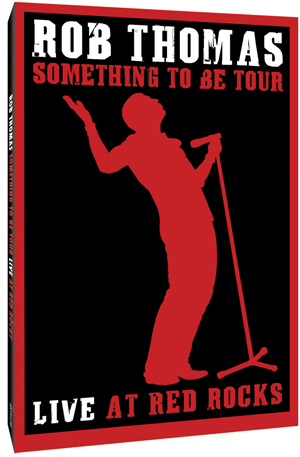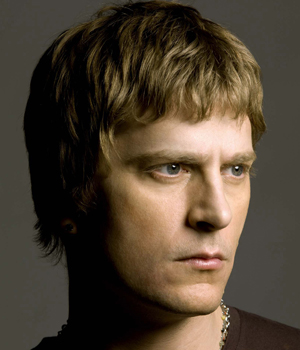
There’s a tradition in sports of retiring jersey numbers. It’s a way of proclaiming that a player’s achievements are unmatchable. No member of the Boston Red Sox, for instance, will ever again wear the number 9, because that was Ted‘s number, and we shall never see his like again; to invite comparison is to invite embarrassment.

I sometimes think it would be a good idea if pop music did something like that. One often hears the argument that certain songs should be retired — even Leonard Cohen thinks the world doesn’t need another cover of “Hallelujah,” and he gets a paycheck every time someone records it — but right now I’m thinking about venues. Maybe not close down the actual site — although the Apollo Theater could have shut its doors after James Brown’s historic 1962 gigs there, secure in the knowledge that no one would ever top those shows, not even James Brown himself — but surely, after Cheap Trick, there’s no further need for anyone to make another live album at Budokan. It’s been done, and definitively.
And as surely as James Brown’s shadow hangs over every subsequent performer to hit the stage at the Apollo, so there is a shade across Rob Thomas’s Live at Red Rocks DVD — or, to give it its full name, Rob Thomas: Something To Be Tour — Live at Red Rocks. The jersey that Rob Thomas has donned bears across its back not a single digit, but a letter and a number; the letter U, and the numeral 2.
The Red Rocks Amphitheatre near Denver, Colorado, has a long and storied history, from its initial conception at the turn of the 20th Century to its renovation in the early 1940s by the Civilian Conservation Corps. The Beatles played there in 1964; Jethro Tull fans started a riot in 1971, and the place is a Mecca for Deadheads and the jam-band scene. But there’s one band who, above all others, made Red Rocks immortal. Because Red Rocks is the place where U2, at the height of their powers, made the transition from musicians to icons.
The towering stones, the pissing rain, the open flames of the braziers atop the stage, provided a backdrop for the Under a Blood Red Sky EP and concert video, and it was literally elemental; watching that show, it seemed inevitable that U2 would soon be the biggest band in the world. And so they were. And every artist that’s recorded at Red Rocks since — be it Dave Matthews, the Moody Blues, or even John Tesh — has been cloaking itself in that borrowed mystique.

With Rob Thomas, we’ve reached a point of diminishing returns. Let’s make no bones about it — they guy is a stumping homunculus with Nosferatu eyes (there’s a line in the opening number that takes the Unintentional Truth In Advertising award: “You don’t want to see me with the house lights on”); he’s also one of the most honored songwriters of his generation, and he takes the stage here in support of his 2005 solo album — his first after a decade fronting Matchbox Twenty. Now, when a singer cuts loose from his band, you can learn a lot about his conception of himself and his talents by watching his next move. After the dissolution of the Police, for instance, we saw Sting’s well-intentioned stab at jazz fusion. With the Something To Be project, Rob Thomas clearly fancies himself a soul man. He’s got a sturdy baritone, but he’s no Al Green. Hell, he’s not even Taylor Hicks. In fact, on a quantitative scale of soulfulness, Thomas scores a mere 32.6 dB, or deciBrowns, placing him just above Darius Rucker and slightly trailing the dude out of Molly Hatchet.
The requisite big band, including a couple of woo-woo girls, don’t do much to help; Thomas’s melodies are sturdy, simple little things; fleshing them out with harmonies doesn’t make them any more interesting. And the arrangements are thick without being spacious, managing mostly to make eight musicians sound like four. We should be thankful that at least Thomas didn’t drag some poor innocent horn section into his folly.
Disheartening enough. But the setlist just leaves me scratching my head. How do you get to be a rock star, even on a Rob Thomas level, without ever learning how to pace a show? The whole first half is one crawler after another. Hey, here’s a slow one! Now give it up for “¦ another slow one! And now for a change of pace, and even slower one, with no drums! Not every gig needs to be the Ramones, of course, and I can appreciate wanting to be all sensitive “Ëœn shit. But you’ve got spread those moments out within the show, so people will know when it’s safe to get up and use the bathroom. By the time Thomas gives us the Singer-Songwriter Death Moment and sits down at the piano to deliver a dirge-tempo recasting of the Matchbox Twenty hit “3 AM,” I find myself longing for the comparative freshness and variety of Nickelback.
[kml_flashembed movie="http://www.youtube.com/v/6n421hzc-bM" width="600" height="344" allowfullscreen="true" fvars="fs=1" /]
He does the same thing with “Smooth,” later on — turning a high-energy romp into a precious acoustic snooze-fest — and it leaves me wondering if Rob Thomas just hates his audience, or what. I can understand an artist wanting to explore different sides of his talent, to re-arrange his old hits; I get that, I do. But in a show already overstuffed with mid-tempo plods, neutering two of your signature songs just seems perverse — an exercise in Not Giving the People What They Want.
I wouldn’t put it past him. Something about Rob Thomas has rubbed me the wrong way since he entered the public consciousness singing “I wanna push you around, I wanna put you down.” The persona he projected in his lyrics seemed to me singularly unpleasant; defensive, surly, manipulative, passive-aggressive — kind of a bully, basically. The anecdotes he tells between songs on this DVD don’t raise my opinion. In one, he talks about fighting with his wife, all the while wanting desperately to run out of the room in the midst of the argument so he could start writing a song about it; later, he admits to still carrying high-school grudges even though he’s well into his thirties. He plays at open-heartedness with his audience, but it rings hollow; it’s not about them, but about how much they dig him.

How does a bitter little ball of insecurities get to be a rock star, anyway? Contrasted especially with the genuine passion of that stage’s most famous tenants, this guy’s image and work seem rather small indeed. Maybe that’s why we get only a few glimpses of the geological formations that frame the amphitheatre in the DVD’s whole two-hour running time; Rob Thomas is exactly the sort of performer who could be upstaged by a rock, no matter how he tries to wrap himself in secondhand glory. An ill-advised mid-set cover of David Bowie’s “Let’s Dance” only serves to hammer the point home: to invite comparison is to invite embarrassment.




Comments